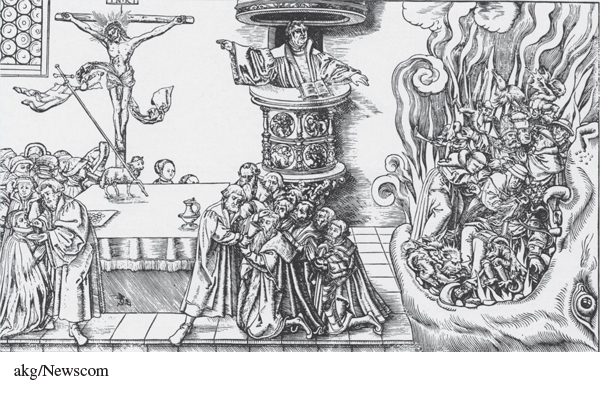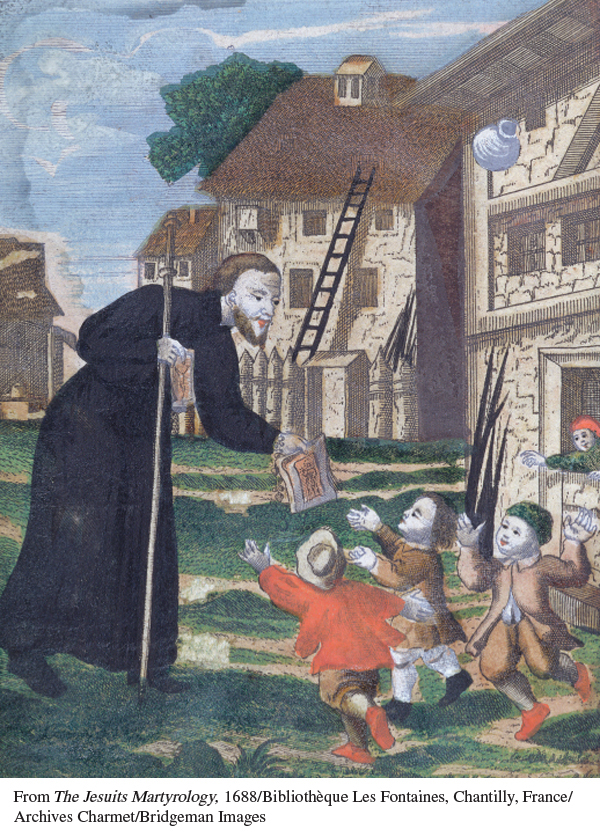Living in the Past: Uses of Art in the Reformation
400
Uses of Art in the Reformation
I n the Reformation era, controversy raged over the purpose and function of art. Protestants and Catholics disagreed, and Protestant groups disagreed with one another. Some Protestant leaders, including Ulrich Zwingli and John Calvin, stressed that “the Word of God” should be the only instrument used in the work of evangelization. Swiss Protestants and Calvinists in many parts of Europe stripped statues, images, and decoration out of many formerly Catholic churches or redesigned them with a stark, bare simplicity. Martin Luther, by contrast, believed that painting and sculpture had value in spreading the Gospel message because “children and simple folk are more apt to retain the divine stories when taught by pictures and parables than merely by words or instruction.” He collaborated with artists such as Lucas Cranach the Elder (1472–1553), who conveyed Protestant ideas in woodcuts and paintings.
Both Protestants and Catholics used pictures for propaganda purposes. In The True and False Churches, Lucas Cranach the Younger (1515–1586) shows Luther standing in a pulpit, preaching the word of God from an open Bible. At the right, a flaming open mouth symbolizing the jaws of Hell engulfs the pope, cardinals, and friars, one kind of “false church.” At the left, Cranach shows a crucified Christ emerging out of the “lamb of God” on the altar as people are receiving communion. This image of the “true church” represents the Lutheran understanding of the Lord’s Supper, in which Christ is really present in the bread and wine, in contrast to the view of other Protestants such as Zwingli, who saw the ceremony as a symbol or memorial.

The Catholic Church officially addressed the subject of art at the Council of Trent in 1563. The church declared that honor and veneration should be given to likenesses of Christ, the Virgin Mary, and the saints; that images should remind people of the saints’ virtues in order to encourage imitation; and that pictorial art should promote piety and the love of God. Consider the anonymous painting Jesuit Priest Distributing Holy Pictures. Parish priests and Jesuits often distributed such pictures to laypeople, including children, to help educate them in matters of doctrine. Church leaders also sponsored the building of lavishly decorated churches that appealed to the senses and proclaimed the power of the reformed Catholic Church. (See Church of the Gesù.)

QUESTIONS FOR ANALYSIS
- What does Cranach’s woodcut suggest about Protestants who had a different interpretation than Luther’s about the Lord’s Supper?
- Cranach’s woodcut could be easily reproduced through the technology of the printing press. How would this have enhanced its impact?
- In what way does the artist of the Jesuit image suggest that people are eager for the Catholic message? How might this painting itself have aroused piety?